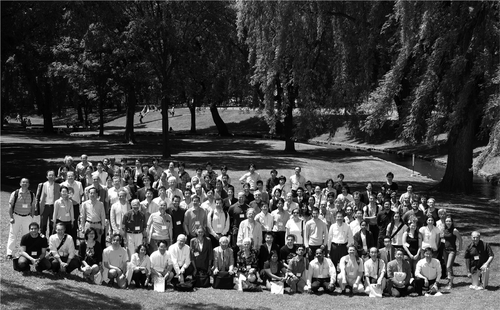The Eleventh International Conference on Quasicrystals (ICQ11) was held in Sapporo Campus of Hokkaido University, Japan, on 13–18 June 2010. The conference continues the series of meetings held at Les Houches (1986), Beijing (1987), Vista-Hermosa (1989), St. Louis (1992), Avignon (1995), Tokyo (1997), Stuttgart (1999), Bangalore (2002), Ames (2005), and Zürich (2008).
At the end of 1984, the paper by Dan Shechtman, Ian Blech, Denis Gratias and John W. Cahn was published [Phys. Rev. Lett. 53 (1984) p.1951], although the actual discovery of the icosahedral phase was made two years before publication. One month later, the paper by Dov Levine and Paul J. Steinhardt came out. It is now 25 years since “quasicrystals” were recognized by the scientific community.
During the following 25 years, the research field of quasicrystals has grown and expanded in several directions. Structural problems continue to engage crystallographers and mathematicians. The unusual physical properties still pose challenges for experimental and theoretical physicists. New alloy systems, including stable binary quasicrystals, have been discovered and sample preparation techniques, such as single crystal growth, have been improved. Material scientists and surface scientists are now trying to establish novel engineering fields. Many complex crystals are now understood in relation to quasicrystals. In addition, there are two new movements. One is an expansion from alloys to other quasiperiodic substances, for example, meso-ceramics, polymers, aggregates of nano-particles, etc. The other is artificial generation of quasiperiodic systems, such as micro-scale structures controlled by laser fields. We are certain that these new results will stimulate fruitful discussions and provide us with a comprehensive understanding of the nature of quasiperiodicity.
ICQ11 was attended by 138 scientists from 19 countries, including 42 students. There were 14 invited talks, 37 contributed lectures and 93 poster presentations. The Jean-Marie Dubois Award, which was established to recognize important, sustained research on any aspect of quasicrystals within the 10-year period preceding the award, is given at the ICQ. In Sapporo, the third award was presented to Marc de Boissieu for his important and pioneering works on the lattice dynamics, phasons and atomic structures of quasicrystals.
Hokkaido was the new frontier of Japan during the Meiji era. Hokkaido University was established at that time to encourage its development and has a long history of research on crystallography. In 1936, Dr. Ukichiro Nakaya successfully produced the world's first “artificial snowflake crystal”. After his discovery, the university became the center of low-temperature science in Japan. Dr. Nakaya is also remembered for his famous phrase: “Snow, a letter from the sky.” One purpose of the present conference was to find a proper ending to the phrase “Quasicrystals, a letter from…?”. You will find an answer in the Concluding Remarks of the conference by Jean-Marie Dubois and Ron Lifshitz in this volume.
Finally, we would like to thank all the participants for the vivid presentations and exciting discussions. Thanks are also due to the members of the International Advisory Board for their valuable advice and suggestions, and the members of the Local Organizing Committee for their considerate arrangements. The next ICQ will be held in Krakow, Poland, in 2013.
